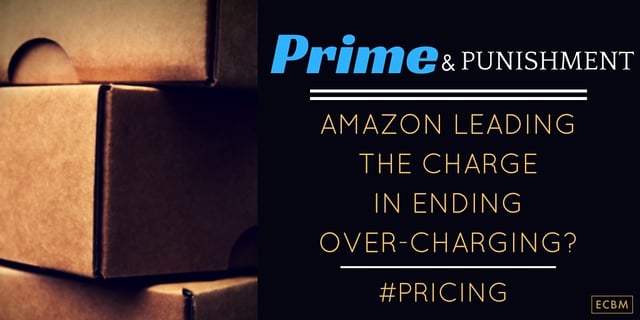
Over the past year, the country has seen a spate of deceptive pricing lawsuits filed against major retailers. In October 2015, a Pennsylvania Court granted preliminary approval to a $50 million lawsuit settlement involving Tween Brands. A month later, JC Penney settled a similar suit in California for approximately the same amount. Other retailers who have seen suits filed against them include Macy’s, Wayfair, Coach, Sears and a host of others. READ MORE: Heavy Risks And Penalties For Uber & Lyft In Pennsylvania
List Prices: A Balloon or Anchor?
These suits all involve what is known as “anchor” pricing. Because so many products are constantly on sale, consumers claim that determining a list price for products can be difficult. Recent studies have found that the average item at JC Penney or Kohl’s was listed at over 65% off its list price on Black Friday. These lawsuits accuse retailers on inflating the list price of an object to make it appear as if the sale is a better deal. Consumers allege that without false information as to the extent of the price reduction, they would not have made a purchase.
Let’s take a coffee maker as an example. A retailer might list the price of the coffee maker as $100 and offer a 20% sale on the item to make the price $80. Another retailer, though, might list the price of the coffee maker as $160 and offer a 50% sale to make the price the $80. The two retailers are offering the same machine for the same price, but the public claims the second retailer is offering a bigger deal solely by inflating the list price.
The End Of Promotions Based On MSRP?
Complicating the problem, state statutes on this issue often lack clarity. Pennsylvania’s consumer protection law simply states that sellers may not “mak[e] false or misleading statements of fact concerning the reasons for, existence of, or amounts of price reductions.” California, on the other hand, states, “No price shall be advertised as a former price of any advertised thing, unless the alleged former price was the prevailing market price [defined as ‘the worth or value of anything advertised’] within three months next immediately preceding the publication of the advertisement or unless the date when the alleged former price did prevail is clearly, exactly and conspicuously stated in the advertisement.”
The Federal Trade Commission has issued its own guidelines on price anchoring. The “Former Price Reduction” guideline primarily focuses on recommending that businesses use honest information when communicating bargains based on former prices to consumers. To this end, the agency recommends that companies not advertise former prices for the purpose of establishing a bargain without having offered the product for sale at that price previously. “The advertiser should be especially careful, however, in such a case, that the price is one at which the product was openly and actively offered for sale, for a reasonably substantial period of time, in the recent, regular course of his business, honestly and in good faith—and, of course, not for the purpose of establishing a fictitious higher price on which a deceptive comparison might be based.”
Online Retailer Amazon, Taking The Lead
Recently, online superstore Amazon has been experimenting with some alternative pricing options. By either showing a previously sold on Amazon price, or by removing list prices altogether from many product listings. The founding idea of Amazon was "to lose on every sale but make it up on volume,” said Larry Compeau, a Clarkson University professor of consumer studies. “It was building for the future, and the future has arrived. Amazon doesn’t have to seduce customers with a deal because they’re going to buy anyway.”
Keeping It Real For The Customer
Ultimately, the individual “loss” to a single consumer as a result of these practices might be quite small. These lawsuits, though, are filed as class actions. $15 per consumer adds up very quickly when one has 50 million consumers. Additionally, class actions lawsuits are significantly more expensive to defend against... And more of the money often goes into litigation expense than actual benefit to the public.
Companies need to do what they can to protect themselves against this proliferation of price anchoring lawsuits. Pricing decisions as this level can become very complex, but to the extent companies wish to list an original price for comparison shoppers, those prices should be rooted in reality.
